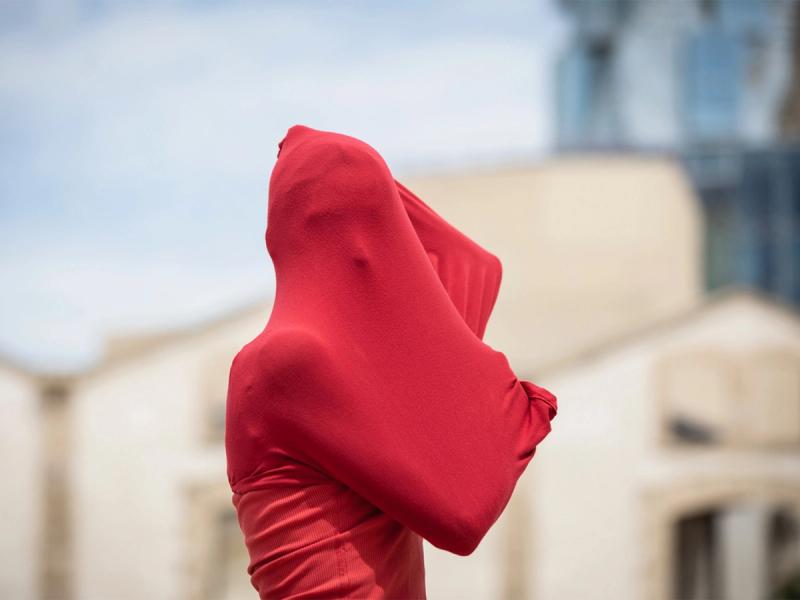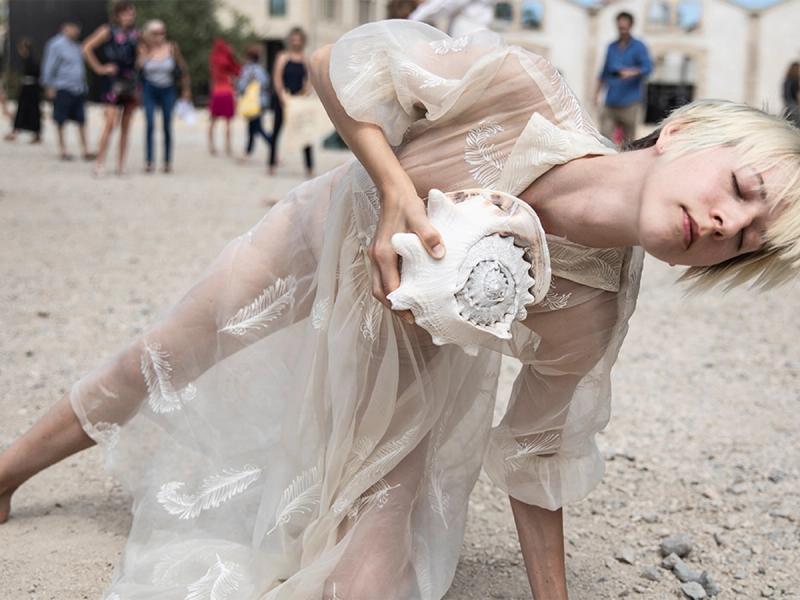
With “Slow Show,” Choreographer Dimitri Chamblas Emphasizes the Mysterious Power of Slow Movement
What gives a physical movement meaning? There are myriad answers: context, shape, intention. For internationally renowned dancer, choreographer, educator, and creative director Dimitri Chamblas, there’s another, primary answer: speed. “If I go to shake your hand, you would understand because of the movement, but also because of the speed of it. If I do it super fast, it’s an offense. If I do it super slow, you won’t understand where I am going. The identity of the movement is given by the speed of it.”
We’re speaking about his performance work Slow Show, a dance piece for 50 performers built around an exploration of extremes. Since its premiere in 2018 at mega-gallery Hauser & Wirth’s Los Angeles outpost, Chamblas has taken it around the world, each time working with a new cast composed of local participants. Later this month, from October 25–28, in collaboration with the L.A. Dance Project and the Museum of Contemporary Art in Los Angeles—and as part of Dance Reflections by Van Cleef & Arpels, an annual dance initiative by the famed luxury jewelry maison to support dance groups and institutions globally, deepening its century-long engagement with the art form—Slow Show will return to L.A. There, it will be joined by two other performances, Crowd by Franco-Austrian artist, choreographer, and director Gisèle Vienne (which, also as part of Dance Reflections, was just at the Brooklyn Academy of Music from October 15–18) and Be Here Now by French dancer and choreographer Benjamin Millepied.
Chamblas, whose work spans artistic, educational, and fashion contexts, believes that “every person has some dances inside them. Every single person.” Slow Show is built around an exploration of this idea. Convening each new cast, Chamblas spends a few days of rehearsals creating a space where the participants are “excited to be together, because if we are excited to be together, we are excited to support each other.” Chamblas accomplishes this through group exercises that invite the performers to think of themselves not so much as dancers, but as people sharing who they are with one another.
Each performer makes a “self-portrait” in movement, using objects, costumes, and gestures. As the process goes on, Chamblas then introduces the idea of extreme slow movement. The performers slow down their self-portraits to an intense crawl, and what begin as extremely legible and often narrative movements are transformed into something much more mysterious. A simple movement, like removing a motorcycle helmet, becomes, when stretched out over the show’s 20-minute length, “a lot of different stories that an audience can invent.”
It’s this quality that gives Slow Show its potency and power: Inviting the audience to step into an experience of time that sits radically outside the everyday, the piece imbues commonplace actions with a hypnotic sense of possibility and struggle. It’s not easy to move so slowly, and the work of the performers to enter this altered state of timing charges their simple movements with a deeply compelling intensity, one that communicates in a register that has no need for language.
“According ourselves to a common speed,” Chamblas says, “can work in a room, in a stadium, and around the globe.” Through the process of setting this piece on performers around the world, Chamblas has seen a human commonality. No matter where the work is happening, the shared experience of slowness is similar. The difference between places and cultures is dissolved, for the show’s brief but intense length, into a captivating consideration of movement and meaning. Asked to elaborate, Chamblas says, with the simple grace of a dancer, “Since the rhythm is the same, they are together.”


